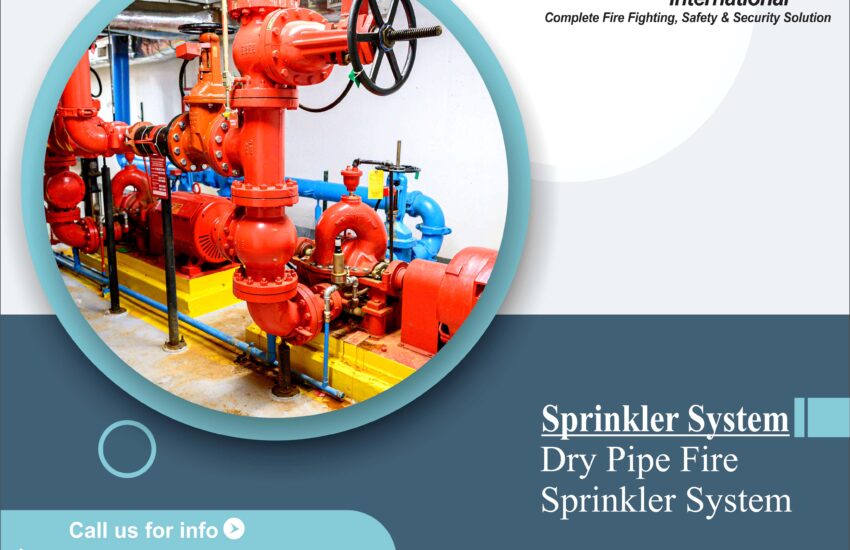Dry Pipe Fire Sprinkler System are an essential component of fire protection in environments where temperatures may fall below freezing. Unlike wet systems that are constantly filled with water, dry pipe systems are filled with pressurized air or nitrogen. Water is held back by a dry valve until the system detects heat from a fire and a sprinkler head activates, releasing the air and allowing water to flow into the piping network.
However, like all fire protection systems, dry pipe sprinklers require consistent and thorough maintenance to function correctly during emergencies. One often-overlooked but critical component of these systems is the dry valve, specifically the clapper gasket within the valve mechanism.
The Role of the Clapper Gasket in Dry Pipe Systems
Inside the dry valve is a rubber clapper gasket designed to hold back water pressure. It keeps water out of the piping until a sprinkler head opens due to high heat. Once activated, the air pressure drops, allowing the water pressure to push open the clapper and flood the system with water to suppress the fire.
But over time, with frequent tripping and resetting of the valve, this clapper gasket experiences wear and tear. The constant pressure and usage can lead to deep grooves forming in the gasket. Eventually, this results in a compromised seal, preventing the valve from resetting properly.
Consequences of Neglected Dry Valve Maintenance
If issues with the dry valve or clapper gasket are not identified during routine fire sprinkler inspection or fire system service, it can lead to significant system failures. For instance, if the valve is unable to properly reset, water may leak into the piping network even when it should be air-filled. This can cause:
- Water pooling in pipes, leading to hidden corrosion
- Pinhole leaks that go unnoticed until water is present
- System malfunction during an actual fire event
- Property damage from unexpected water discharge
Even small leaks caused by pinhole corrosion can become major problems if left unaddressed. These are often invisible when the system is air-filled but reveal themselves once water enters the network.
Importance of Thorough Inspections by Certified Fire System Technicians
A recent case highlights how fire system technicians failed to identify a faulty valve during a scheduled service visit. The clapper gasket had deteriorated significantly, and without prompt detection, it could have resulted in unwanted valve tripping and water accumulation in the piping. This is a stark reminder of the importance of:
- Hiring certified, experienced technicians for all fire sprinkler system inspections
- Ensuring dry valve components like clapper gaskets are carefully examined
- Maintaining a consistent inspection and maintenance schedule per NFPA 25 standards
Preventative Maintenance: The Key to Fire System Reliability
To ensure the long-term reliability of your dry pipe sprinkler system, regular preventative maintenance is critical. This includes:
- Visual and physical inspection of the clapper gasket
- Testing the valve’s ability to set and reset properly
- Checking for signs of corrosion, leakage, or mechanical damage
- Performing periodic trip tests to confirm system readiness
Conclusion
A properly functioning dry pipe fire sprinkler system is a frontline defense against fires in unheated or cold environments. But its effectiveness heavily relies on the condition of its components, especially the dry valve and clapper gasket. Neglecting maintenance can lead to costly damages, water leaks, and system failure during emergencies.


